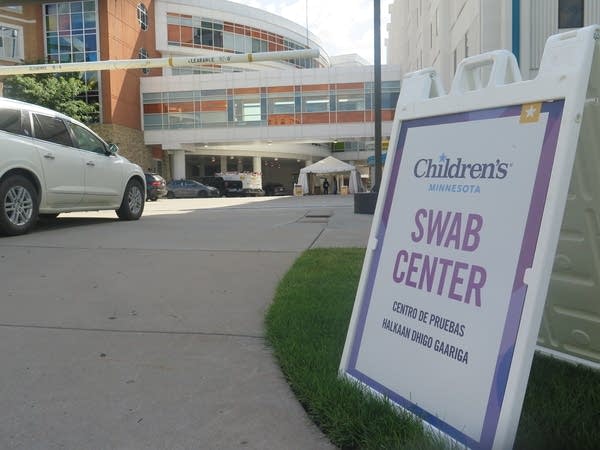Higher COVID-19 rates seen in Black and Hispanic children in Minn.

Go Deeper.
Create an account or log in to save stories.
Like this?
Thanks for liking this story! We have added it to a list of your favorite stories.
COVID-19 affects Black and Hispanic children at higher rates than whites in Minnesota, state health data shows.
Of the 52,281 confirmed cases as of Tuesday in Minnesota, people aged 19 years old and younger are around 13 percent of the cases. Health professionals see a troubling trend.
“We're for sure seeing a disproportionate number of children of color being impacted by COVID,” said Patsy Stinchfield, director of infection prevention and control at Children’s Minnesota.
The hospital system has treated around 300 pediatric COVID-19 cases as of mid-July. Thirty-one percent of those patients were Black or African American; 24 percent Hispanic; 16 percent white; and 11 percent Asian. The numbers are similar across the state.
Turn Up Your Support
MPR News helps you turn down the noise and build shared understanding. Turn up your support for this public resource and keep trusted journalism accessible to all.
Stinchfield isn’t sure why there are such disparities, but she said many children seemed to get the virus from a family member.
"I think in a lot of our families of color, they are front-line workers,” she said. “They are helping serve the public. And so they are exposing themselves to crowds, to people and then potentially bringing that home themselves, getting sick and then passing it on to their children."

A similar disparity exists in the state’s small number of confirmed cases of multisystem inflammatory syndrome in children or MIS-C. So far, there are 15 cases — 11 in children 5 years old and younger. Nine of the 15 cases were in Black children. Overall, there are more boys than girls known to have MIS-C.
The very rare syndrome is believed to be caused by the coronavirus. It can be severe, and can be deadly, though no deaths have been tied to the syndrome in Minnesota.
Nationwide, there have been 342 reported cases of MIS-C. About 70 percent of those cases have occurred in children who are Hispanic/Latino or nonHispanic Black. Six children have died, according to the Centers for Disease Control and Prevention.
The cases show various symptoms.
Dr. Sarah Linn, an infectious disease physician with the state Health Department, said kids with the syndrome typically have fevers that last for days.
“And then the children have typically had either a rash or gastrointestinal symptoms like abdominal pain or diarrhea or vomiting,” Linn said.
Dr. Andrew Kiragu, the medical director of the pediatric intensive care unit at Hennepin Healthcare and a professor at pediatrics at the University of Minnesota, has worked with two patients with the syndrome.
“They were sick enough to be in the ICU. One required some additional respiratory support and one required additional fluid resuscitation,” Kiragu said.

He said it’s been concerning for parents, especially if they or their children have been through COVID-19 already.
“Especially now with this new syndrome, you know, it does impact multiple systems. There's that added concern because you get sick, you think you're out of the woods. But then two to four weeks later, ‘oh, boy, what's going on?’” he said.
After peaking in early June, cases of MIS-C do not seem to be occurring as frequently — for now.
But physicians and researchers still don’t know for sure why children and adults who are Hispanic or Black are showing up in greater numbers with COVID-19 and MIS-C.
Dr. Adrienne Randolph, a critical care physician at Boston Children’s Hospital and a professor at Harvard Medical School, authored one of two studies published in the New England Journal of Medicine on MIS-C last month.
“We're doing the best that we can to do a quick investigation of factors to try to understand better,” Randolph said.
As of yet, doctors and researchers do not have evidence explaining why disparities exist. But Randolph said there are many factors already that can put Hispanic and Black people of any age at risk for COVID-19.
Randolph and other physicians interviewed say those factors include health care systems that discriminate against people of color, multigenerational living spaces, jobs in front-line industries and a lack of information in the languages of recent immigrant groups.
The CDC is doing a more intensive study of cases so far to see which factors might be playing in a role in the disparities.
Dear reader,
Political debates with family or friends can get heated. But what if there was a way to handle them better?
You can learn how to have civil political conversations with our new e-book!
Download our free e-book, Talking Sense: Have Hard Political Conversations, Better, and learn how to talk without the tension.



